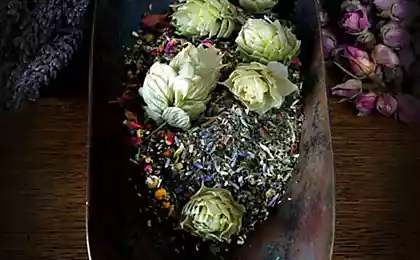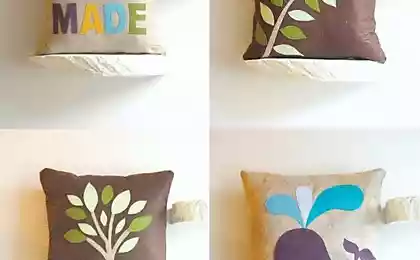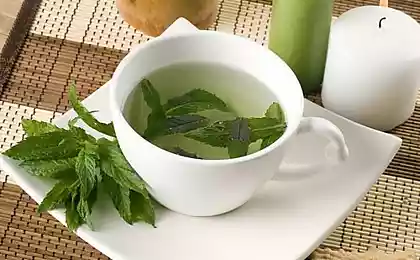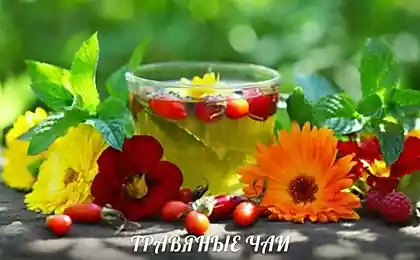476
Mint relieves stress, itching and not only

Mint pigweed (cereals) are also called curly or garden. Humanity loves its excellent, not too sharp flavor. It is one of the most popular seasonings. Botanists refer the garden mint to the family of Lamiaceae and the genus Mentha. Its scientific name is Mentha spicata. This immortal plant comes from the Mediterranean. Now mint has spread to Europe, and partially in Asia and Africa. It is used in the preparation of beverages, salads and confectionery. It also decorate the dish before serving. Mint prefers moist and nutrient-rich soil. It grows mainly in the spaces not occupied by other crops. She grows a wide network of roots.
These and many other facts about the mint was contained resource Nutrition And You. The stems reach a height of 75 centimeters. They are covered with oval leaves are rich green in color with veins and serrated edges. In the summer it blooms small pinkish-purple flowers.
Are known approximately 20 varieties of garden mint. There are also hybrids, most of which cannot definitely be attributed to any species, since they are volatile and tend to interbreed with each other. Not counting the popular peppermint and water (longifolia) mint, some have also gained a pineapple, ginger, Japanese, corn (field) and rotundifolia varieties of this beautiful plant.
The benefits of peppermint for health
Mint is a herb with a pleasant aroma that contains many beneficial vitamins, antioxidants and phytonutrients.
In leaves and other parts of the plant contain essential oil menthol. Unlike the leaves of peppermint (40%), spearmint leaves (0,5%) contains only a small amount of menthol. In parentheses are the content of menthol in the leaves of each of the two common varieties of mint. So mint pigweed less aromatic than pepper.
Low calorie mint. Its energy value is about 43 kilocalories per 100 grams.
The main essential oil of peppermint is menthol. Besides, mint contains other important chemical compounds — alpha-pinene, beta-pinene, carvone, cineole, linalool, limonene, myrcene and caryophyllene. These compounds help to relieve fatigue and stress.
Parts of the plant also contain sufficient quantities of minerals such as calcium, manganese, iron (148% of the recommended daily consumption) and magnesium. Iron is essential to the enzymes involved in cellular metabolism and the synthesis of hemoglobin. Potassium is an important component fluids of the cells and organism, helps control heart rate and blood pressure. Manganese is used by the body as a contributing factor in the antioxidant enzyme superoxidedismutase.
In addition, mint is also rich in antioxidant vitamins, including vitamin A (4054 international units — IU, IU; 135% of the recommended daily value of consumption), beta-carotene, vitamin C, folic acid (25% of the recommended daily value of consumption), vitamin B6 (pyridoxine), and Riboflavin and thiamin.
The use of peppermint in medicine
Almost all of the curly mint has found application both in traditional and in modern medicine.
A decoction of mint is an excellent remedy for minor manifestations of such ailments as headaches, nervous strain, fatigue and stress, as well as diseases of the respiratory tract. Mint helps to prevent asthma, bronchitis and colds.
It is also used in the treatment of ailments of the digestive tract, including nausea, flatulence and hiccups as it relaxes the muscles of the stomach.
Menthol, mint essential oil has analgesic properties — including local actions, as well as dilatory qualities. Menthol is also used in the manufacture of toothpastes and rinses the mouth.
It is used to effects on the skin in creams and lotions easing the itch of dermatitis and urticaria.
Oil curly mint is used in multi-component oil massage and aromatherapy to relieve headaches, stress, fatigue, nervous conditions, as well as itching.
Possessing antiandrogenic properties, it helps women to get rid of unwanted hair.
Warnings
During pregnancy the mint curly must be treated with caution. Some sensitive people mint can cause irritation and rashes on the skin. Those who know about such properties of their skin, should take up mint only wearing gloves.
Collecting and storing mint
Usually the mint leaves for cooking needs is collected before it will bloom. For essential oils used in various parts of the plant.
Mint is sold in the form of leaves with stems in fresh or dried form. Give preference to fresh, bright green leaves with a pleasant smell. Avoid yellowed leaves and leaves with flowers.
Rinse the mint leaves under running clean water, blot with a clean absorbent cloth and store in the refrigerator. To use mint you need as quickly as possible.
To dry, place the mint on a plastic tray in one layer. Dry the mint in the shade. Keep it protected from the flow of air container in a cool place, avoiding direct sunlight.
Nutritional value of mint
In parentheses are the percentage of the daily allowance. Nutritional value is based on 100 grams fresh curly mint — Mentha spicata (Latin scientific name), Spearmint (English title) — according to information from the Ministry of agriculture of the USA, shown in the resource Nutrition And You.
General information:
energy value — 44 kilocalories (2%);
carbohydrates 8.41 grams (6,5%);
protein — 3.29 grams (6%);
fats — 0.73 grams (3%);
fiber, part of the food — 6.8 grams (18%).
Vitamins:
folic acid (vitamin B9) — 105 micrograms (26%);
nicotinic acid (vitamin B3) — 0,948 milligrams (6%);
pyridoxine (vitamin B6) — 0,158 mg (12%);
Riboflavin (vitamin B2) — 0,175 milligrams (13,5%);
thiamine (vitamin B1) — 0.078 milligram (6,5%);
vitamin A — 4054 international units (IU, IU) — 135%;
vitamin C — 13.3 mg (22%).
Electrolytes:
sodium — 30 milligrams (2%);
potassium 458 mg (64%).
Minerals:
calcium — 199 milligrams (20%);
copper — 0,240 mg (75%);
iron — 11.87 mg (148%);
magnesium — 63 mg (16%);
manganese — 1,118 milligrams (48,5%);
zinc 1.09 mg (10%).
One of the pictures depicted arrived to feast on the nectar of flowers mint bee. Have you found her? After all, human attention does not tend to concentrate on the little things and scientists, the psychologists found that only one of several dozen students were able to remember and correctly draw the Apple logo. published
Source: hi-news.ru























